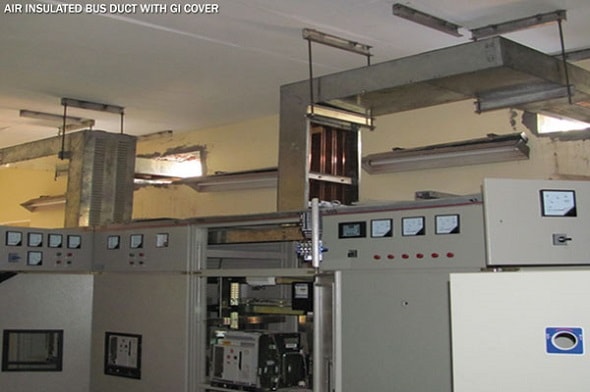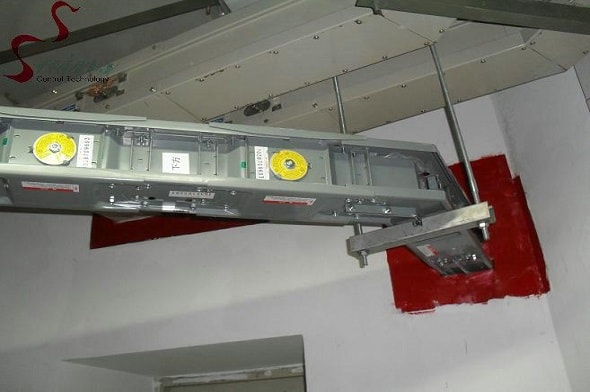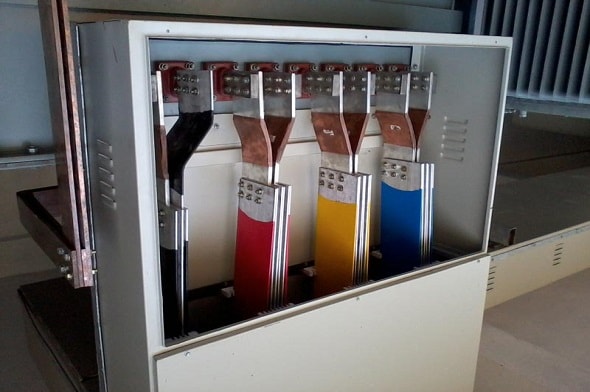
Bus Duct Construction Work
Bus duct is used for the effective and efficient supply of electricity in mostly industrial locations. Copper or aluminum is used for the conductor of bus duct that be insulated and enclosed completely for protection against mechanical damage and dust accumulation. A bus duct system is an effective method of distributing power to your switchgear and various loads. However, bus duct problems can lead to catastrophic damage and extensive downtime.
There are basically three general categories of bus duct (all-metal enclosed). The nonsegregated phase bus implies a duct where all phase conductors are in a common metal enclosure without barriers between phases. This definition applies to rigid and flexible conductors such as the bar or cable duct.
Segregated phase bus is a duct where phase conductors are in a common metal enclosure but are segregated by ground metal barriers between each phase conductor. Isolated phase duct is when each phase conductor is enclosed in its own metal housing and adjacent conductor housings are separated by an air space. This duct usually has higher amp ratings than other types. The housing and conductors are tubular in shape and are welded at site together. This duct is force-air cooled above a 25000A continuous rating.
Applicable standards
It standard covers the design, manufacture, testing and ratings of the all metal enclosed bus duct, including cable duct systems. When part of the equipment, it contains the associated equipment such as inter connections, enclosures, switches, supporting structures and disconnecting links. This includes disconnects primarily used with isolated phase duct but can be used with all other types of duct, including cable duct.
Outside the scope of this standard is duct rated to 600V or open type conductor assemblies. The CSA C22.2 No. 201 standard is the Canadian measure for metalenclosed duct for voltages rated from 751V to 46kV, AC or DC. This standard covers the design, manufacture, testing and ratings of all types of metal-enclosed bus duct including cable duct systems. It includes all accessories associated with all types of duct, as does ANSU. For isolated phase duct, it is limited to amp ratings up to 5000A continuous.
Application
All three duct systems are actually identical as to application and have the same basic ratings as previously listed. Price usually determines which application is most appropriate for which type of duct. One should not consider the duct cost alone but include the cost of installation, and therefore the total cost of the installed duct system.
In general, segregated bus duct can be considered slightly more reliable than non-segregated duct based on the fact that a-bus-to-ground fault may be contained within the separate, groundedmetal- barriered compartments. This is particularly true for initially low-level ground faults that exist on an ungrounded, or high-resistance grounded, system. Rigid conductor bus duct is basically factory manufactured and requires bolting sections together in the field and installing insulated conductor joint boots.
Accessories are generally factory assembled, including equipment such as switchgear and transformers. On the other hand, cable duct is normally supplied to the installing contractor on nonreturnable reels for field installation and termination.
Standard switchgear or transformer connections are direct via the cable with suitable stress kits or terminating kits, depending on the termination requirement. Special terminating boxes with rigid copper conductor connections can be supplied to the cable from which the duct is connected. With rigid duct, tee arrangements are quite practical.

